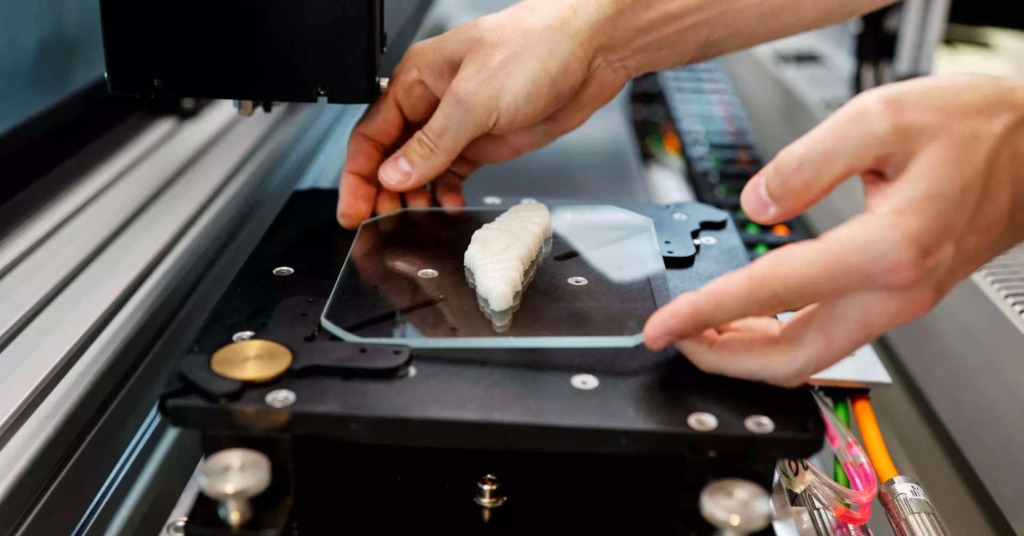By harnessing the potential of lab-grown fish, companies like Steakholder Foods and Umami Meats offer a viable solution to meet the growing demand for seafood while safeguarding the health of our oceans.

In a groundbreaking collaboration, food tech startups Steakholder Foods and Umami Meats have joined forces to create the world’s first lab-grown fish fillets. Utilizing the power of 3D printing technology, these innovative companies aim to address the increasing demand for seafood while mitigating the environmental impact caused by traditional fishing practices.
The Rising Demand for Seafood:
With a growing global population and increasing incomes, the demand for seafood is projected to nearly double by 2050. However, the seafood industry faces significant challenges, including overfishing, climate change, and ocean pollution, which threaten its ability to meet this rising demand. Conventional fishing practices not only strain marine ecosystems but also contribute to greenhouse gas emissions.
Enter Lab-Grown Fish:
Recognizing the need for alternative sources of seafood, innovative startups like Steakholder Foods and Umami Meats propose growing fish from cells in laboratories. This novel approach offers a potential solution to the environmental and sustainability challenges faced by the industry. By cultivating fish fillets from cells, these startups aim to create a sustainable source of seafood that can meet future demands without depleting ocean resources.

The Collaboration and Tasting Event:
Steakholder Foods and Umami Meats recently unveiled a cultivated fish fillet prototype, marking a significant milestone in lab-grown fish production. The product, created through a combination of cellular agriculture and 3D printing, closely mimics the taste, texture, and flakiness of real fish.
The Process Behind Lab-Grown Fish Production:
Lab-grown fish production begins with extracting cells from living animals. These cells are then placed in bioreactors, where they are provided with the necessary nutrients and conditions to multiply. While the flavor of lab-grown meat is similar to that of traditional meat, the texture often falls short. However, Steakholder Foods has developed a technique to transform lab-grown fish cells into a specialized “bioink” that can be 3D printed into fully formed, ready-to-cook fish fillets.

Challenges and Future Considerations:
While the achievement of lab-grown fish fillets is significant, there are still challenges to overcome. The cost of production remains a crucial factor in making lab-grown fish commercially viable. For lab-grown seafood to help meet future demand sustainably, it needs to be economically competitive with traditional seafood from oceans and fish farms. Ongoing research and development efforts will be essential to refine the process, increase production efficiency, and reduce costs.